How to Get Wood Stove Heat to Other Rooms: A Comprehensive Guide
- November 10, 2023
- 1 comment
Wood-burning stoves are not only a charming addition to a home but also an effective way to provide warmth. Their traditional allure, combined with the cozy ambiance they create, makes them a popular choice for many homeowners. However, a common challenge with wood-burning stoves is ensuring they efficiently distribute heat beyond just the room they occupy. The goal is to transform your stove from a single-room heater into a source of comfort for your entire home.
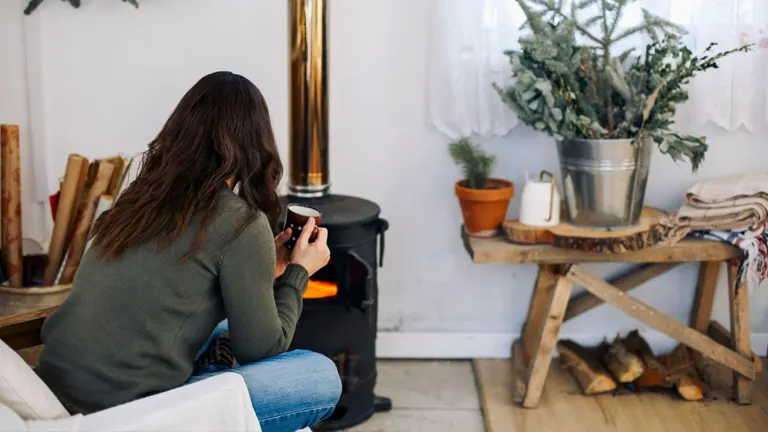
This guide delves into various practical methods to enhance the efficiency of your wood-burning stove, ensuring that its warmth reaches every corner of your living space. From simple adjustments and accessories to more advanced heating systems, we will explore how to optimize your wood stove’s heating capabilities, making your entire home a haven of warmth and comfort. Whether you live in a spacious multi-story house or a cozy single-level home, these strategies are designed to help you get the most out of your wood-burning stove, transforming it into an effective central heating solution.
Optimizing Your Wood-Burning Stove
Maintenance and Cleaning

A well-maintained stove is synonymous with high performance. Regular cleaning of your stove and flue, coupled with annual chimney sweeping, is essential for enhancing the efficiency of your wood-burning stove. This practice not only improves heat distribution throughout your home but also upholds critical safety standards. Keeping your stove free from excessive ash and debris ensures better airflow and combustion, leading to more effective heating and reduced smoke emissions.
Proper Usage

The efficiency of your wood-burning stove is also heavily dependent on the type of wood and the way you burn it. Utilizing wood that is properly dried and seasoned, with a moisture content below 20%, is crucial for clean and efficient burning. This minimizes the buildup of soot and creosote in your chimney, reducing the risk of chimney fires and improving indoor air quality.
When building a fire, start with a well-prepared bed of kindling, ensuring it’s glowing hot before adding small logs. Gradually work your way up to a full load of wood. Be mindful not to overfill your stove; this can cause dangerously high temperatures, potentially damaging the stove and posing a fire hazard. The optimal burning temperature for most stoves ranges between 260°C and 460°C. Maintaining this temperature range ensures efficient combustion and heat distribution, making your wood-burning stove both a functional and safe heating solution for your home.
Heat Retention and Insulation

Maximizing the efficiency of wood-burning stoves isn’t just about spreading heat; it’s also about retaining it. Improving insulation in your home is crucial. This includes sealing air leaks around windows and doors, adding insulation to walls and attics, and using thermal curtains to prevent heat loss through windows.
Tips: Simple measures like sealing gaps, using draft stoppers, and installing double-glazed windows can significantly improve heat retention. In addition, proper roofing insulation can prevent heat from escaping upwards, a common issue in many homes.
Understanding Heat Output
Heat Measurement

Understanding how the heat from wood-burning stoves is quantified is crucial for optimizing their use. The heat output is typically measured in kilowatt-hours (kWh) or British Thermal Units (BTUs). A wood stove, when operated with fully open-air vents, can produce up to approximately 15kW (51,000 BTUs). However, this output can decrease to around 4kW (14,000 BTUs) when the air vents are partially or fully closed. This variation is significant and plays a key role in how much heat is distributed throughout your home.
Output Figures
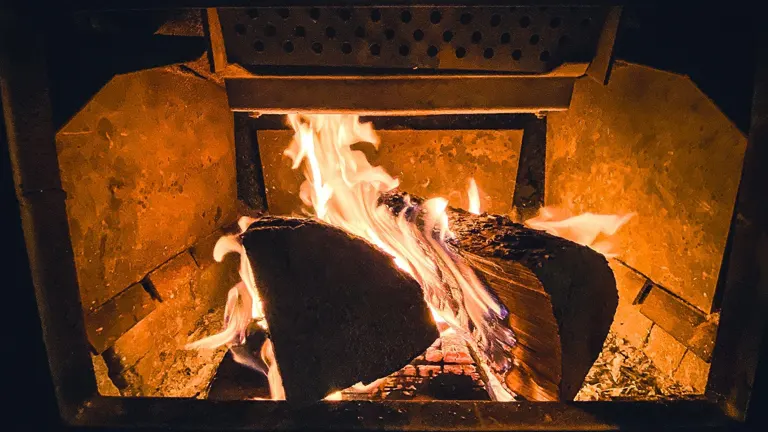
Wood stoves usually come with two key heat output figures: the maximum heat output and the nominal heat output. The maximum heat output represents the highest level of heat that can be achieved under optimal conditions. In contrast, the nominal heat output refers to the amount of heat that can be consistently maintained while operating the stove at its rated efficiency. Understanding these two figures is essential for gauging the efficiency of your stove and how well it can heat your space.
Factors Affecting Heat Distribution
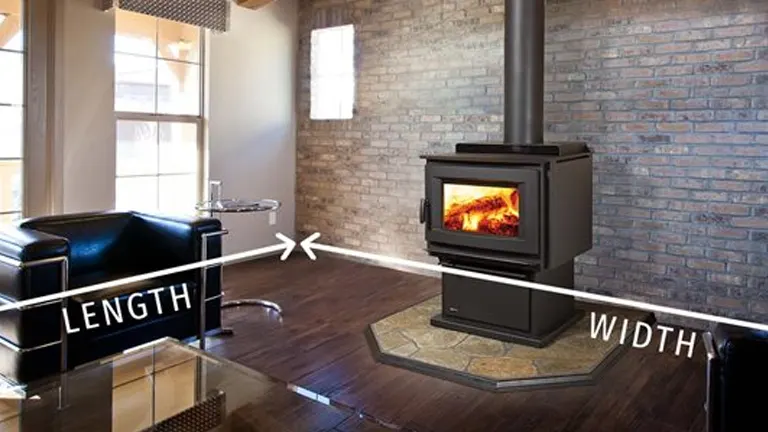
Several factors influence how effectively a wood stove heats your home. The size of the room where the stove is installed is a primary consideration; larger spaces may require more heat output for adequate warming. The layout of your house also plays a crucial role. Homes with open floor plans or multiple levels may present challenges in distributing heat evenly. Additionally, the efficiency of your stove itself is a determining factor. More efficient stoves are better at converting fuel into heat and distributing it throughout the space.
To maximize the heating potential of your wood stove, it is important to understand and consider these factors. In some cases, additional measures, such as using fans or installing duct systems, may be necessary to spread the heat more evenly across different areas of your home.
Heat Distribution Strategies for Specific Types of Homes
- Single-Story Homes: In single-story homes, heat distribution can be more straightforward due to the absence of multiple levels. Fans and strategic placement of the wood stove can efficiently circulate heat. However, attention should be paid to homes with open floor plans or partitioned rooms, as these layouts may require different strategies, such as additional fans or reflective panels to direct heat.
- Multi-Story Homes: For homes with multiple levels, using the natural tendency of heat to rise is key. Installing the wood stove on the lower floor and using vents or duct systems to channel warm air to the upper floors can be effective. For homes with basements, placing the stove there can also be a strategic choice, using the whole structure to distribute heat upwards.
- Homes with Open Floor Plans: In homes with open floor plans, heat can move freely, but it may not always reach distant corners or isolated spaces. Placing the stove centrally or using fans to push air into far-reaching areas can help.
- Homes with Irregular Layouts: Irregularly shaped homes or those with many internal walls may require a combination of methods, including strategically placed fans, duct systems, and additional insulation in colder areas.
Techniques for Spreading Heat
Using a Fan to Circulate Heat

One of the simplest and most effective ways to enhance the distribution of heat from your wood stove is through the use of a fan. When placed strategically on your wood stove, a fan can significantly improve the circulation of warm air throughout the room. The optimal position for the fan is on the back corner of the stove. This placement allows for a balance in temperature beneath the fan, promoting efficient movement of the fan blades and thereby distributing heat more evenly. This method is particularly effective in larger rooms or spaces with an irregular layout, helping to eliminate cold spots and ensure a comfortable, even temperature throughout.
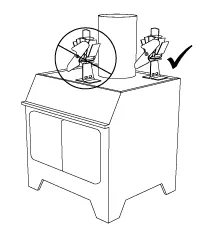
Tips: The ideal position for the fan is on the back corner of the stove. This specific location offers a balance in temperature beneath the fan, which is crucial for promoting the efficient movement of the fan blades. By placing the fan here, you encourage a more uniform distribution of heat as the fan can capture the warm air rising off the back of the stove and propel it outwards into the room.
This method is particularly effective in larger rooms or spaces with an irregular layout, helping to eliminate cold spots and ensure a comfortable, even temperature throughout. Additionally, for stoves placed against a wall or in a corner, positioning the fan so that it directs the air towards the center of the room can also help in spreading warmth more evenly.
If you’re on the hunt for the perfect wood stove fan, why not check out our list of top picks? We’ve put together some great options just for you! 10 Best Wood Stove Fans 2023
Directing Heat to Specific Areas
Leveraging the natural behavior of heat, which rises, is key in effectively using a wood stove for heating multiple floors. By installing the wood stove on the ground floor, you can take advantage of this phenomenon to warm the upper levels of your home. To facilitate this, vents can be installed in the ceiling of the room where the stove is located and in the floors of the rooms above. These vents allow the warm air to rise from the stove room to the upper floors, efficiently heating them. This method is especially useful in multi-story homes, ensuring that the warmth from the stove reaches even the farthest corners of the house.
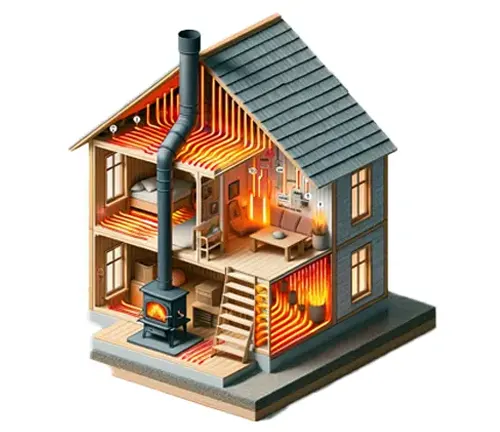
Adding Ducts for Heat Distribution
For a more systematic approach to spreading heat from your wood stove throughout your home, consider installing proper ducting. This method involves creating a system that draws cold air from the more distant rooms of the house towards the stove. As the stove heats the air, the warm air is then circulated back into these rooms. This setup creates a continuous flow of air, pulling cold air in and pushing warm air out, thereby achieving a balanced and efficient distribution of heat. This solution is particularly effective in larger homes or in homes where the layout makes it challenging for heat to naturally flow into all areas. Proper duct installation can ensure that every room benefits from the warmth of the wood stove, regardless of its location relative to the stove.
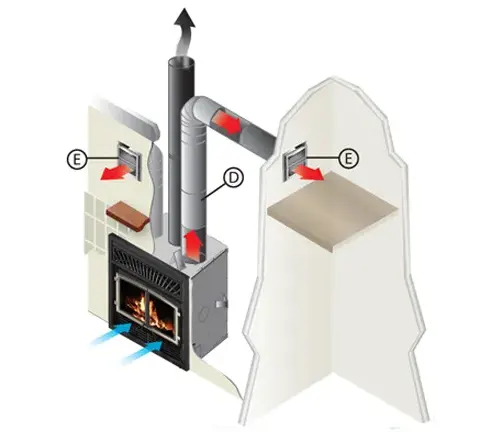
Hydronic Heating Systems
These systems use heated water circulated through pipes and radiators to distribute heat. While more complex and costly to install, they can provide even heat distribution and are efficient for homes with existing water-based heating systems. This can be an excellent option for those looking to integrate their wood stove into a larger heating solution, ensuring consistent warmth throughout the home.
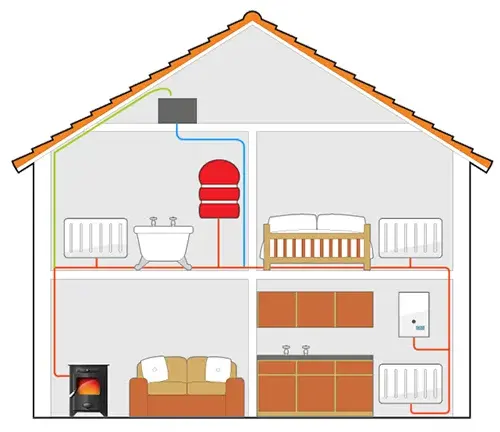
Additional Considerations
Safety Precautions
Safety should always be at the forefront when implementing any changes to your home’s heating system, particularly with wood stoves. The installation of fans, vents, or duct systems must be carried out with a thorough understanding of both the stove’s operation and the structural integrity of your home. It’s highly recommended to consult with heating professionals or certified chimney sweeps when making these modifications. They can provide valuable insights into the best practices for installation, ensuring that these enhancements do not compromise the safety of your home. Additionally, regular maintenance checks and adherence to safety guidelines are essential to prevent any fire hazards or other risks associated with wood stoves.
Cost-Benefit Analysis
While there is an upfront cost associated with implementing these heat distribution strategies, they can be viewed as an investment in the efficiency and comfort of your home. By optimizing the heat output of your wood stove, you can achieve more uniform heating throughout your house, which may reduce the need for additional heating sources in cooler areas. This can lead to significant savings on wood consumption and overall heating costs in the long run. Furthermore, enhancing the efficiency of your wood stove not only saves money but also contributes to a more environmentally friendly heating solution by reducing the amount of wood burned and minimizing emissions. Thus, these strategies offer both economic and ecological benefits, making them a worthwhile consideration for any homeowner with a wood stove.
Conclusion
Effectively spreading the warmth from your wood stove throughout your entire home is a multifaceted endeavor that encompasses diligent maintenance, thoughtful placement, and innovative heat distribution techniques. It’s important to recognize that while some methods, such as positioning a fan or regular stove cleaning, are straightforward DIY projects, others require a more professional touch. The installation of vents and duct systems, for instance, should be undertaken with professional guidance to ensure not only the efficiency of heat distribution but also the safety of your home.
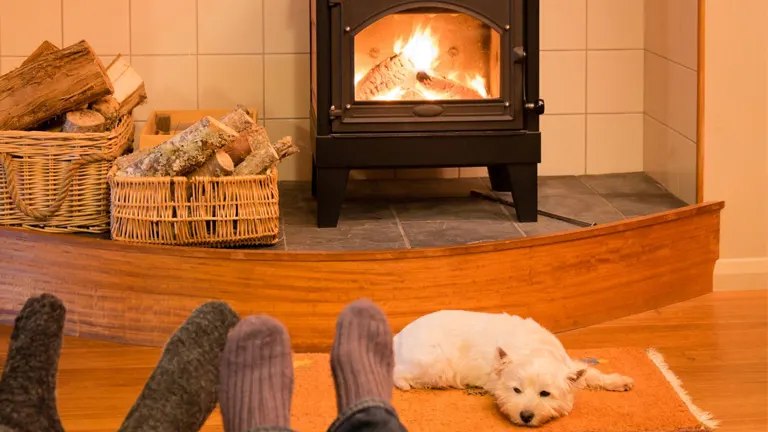
Implementing these strategies not only enhances the warmth and comfort of your living space but also optimizes the performance of your wood stove, making it a more effective and economical source of heat. Whether you’re looking to improve the heat flow to a single room or across multiple floors, these solutions provide a pathway to achieving a cozy, evenly heated home.
Remember, the key to successful heat distribution lies in understanding the capabilities of your wood stove and aligning them with the specific needs of your home’s layout. With the right approach and a bit of ingenuity, your wood stove can transform from a single-room heat source into a central heating powerhouse, bringing warmth and comfort to every corner of your abode.
FAQs
- How can I effectively distribute heat from my wood stove to other rooms?
Utilizing fans or a built-in blower system can help circulate warm air from the wood stove throughout your home. Additionally, strategically placing fans near the stove can direct the heat into other rooms. - Can I use ductwork to spread wood stove heat?
Yes, some homeowners install ductwork or use existing HVAC systems to distribute wood stove heat more evenly. However, this requires professional installation to ensure safety and efficiency. - Is it possible to use a ceiling fan to distribute wood stove heat?
Absolutely! Running a ceiling fan in reverse (clockwise) at a low speed can push the warm air that rises to the ceiling back down into the room and adjacent areas. - How do heat-powered wood stove fans work?
These fans operate using thermoelectric technology, where the heat from the stove generates electricity to power the fan blades. They’re an efficient way to distribute heat without using any external power sources. - What are the best ways to improve heat distribution in a multi-level home?
Opening the doors of rooms and using additional fans can help. For multi-level homes, installing a wood stove in the basement can allow the heat to rise naturally through the upper floors. - Can I use a wood stove heat reclaimer to distribute heat?
Yes, a heat reclaimer can be attached to the stovepipe of a wood stove. It captures heat from the stove’s exhaust gases and redistributes it into the room, improving overall heating efficiency. - Are there any safety concerns when trying to distribute heat from a wood stove to other rooms?
Safety is paramount. Ensure that any method used for distributing heat does not create fire hazards. Regularly inspect and maintain fans, ductwork, and other equipment used for heat distribution. - Can the layout of my home affect the distribution of wood stove heat?
Yes, the layout, including the position of the stove, room sizes, and the presence of open spaces or hallways, can significantly impact how well heat is distributed. Open layouts tend to allow easier heat movement compared to compartmentalized designs.

David Murray
Forestry AuthorI'm David Murry, a forestry equipment specialist with a focus on chainsaw operation. With over 13 years of experience, I've honed my skills in operating and maintaining a wide range of machinery, from chainsaws to log splitters. My passion for the outdoors and commitment to sustainable forestry drive my work, which emphasizes safety, efficiency, and staying updated with industry advancements. Additionally, I'm dedicated to sharing my expertise and promoting environmental awareness within the forestry community.

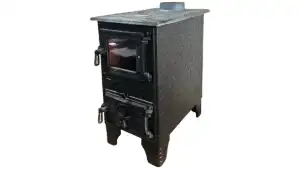
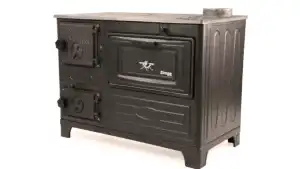
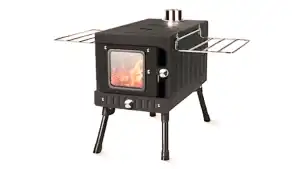






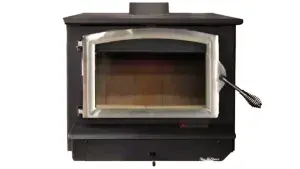

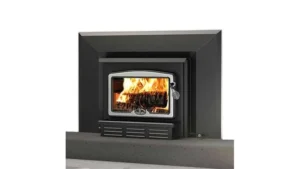
Hi Interesting info.Thanks. I live in an 1850 semi detached cottage with a Woodburner in the living room. We have extended the cottage so it has 3 bedrooms upstairs and a large kitchen adjoining the living room housing the woodburner downstairs.I have a fan with 2 separate rotating sets of blades. Are these more or less effective than one big one? Also would the duct option require a lot of work or even not be suitable? Finally presumably if I got another fan and sat one either side of the burner that would increase the heat also? Sorry for so many questions! Would you mind doing your best to answer them please. Thanks
Mark Field
November 12, 2023 2:22 pm